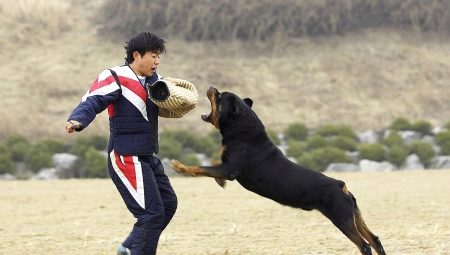Bringing a tiny puppy to the house in order to raise a friend, defender and guard of his house out of him, the question arises of the need for his training. You can contact the dog handlers or, if you wish and free time, to teach the baby yourself, at home. We will talk about the features of rottweiler training in this article.


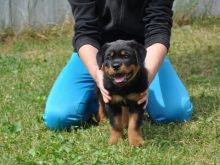
History reference
There is no reliable data on how and when this breed appeared, since over the course of several hundred years the appearance has undergone a number of changes. The purpose of these dogs remained unchanged. It is known that in the 17th century in Germany this breed was in demand among butchers, since a herd of cattle was delivered on its own to the place of sale or slaughter. Dogs of the described species were responsible for controlling the herd.
Their endurance, poise and mind made it possible to cope with the work of a shepherd. The proceeds from the sale of meat were hung on a dog’s collar in a place inaccessible to pickpockets.
Also these dogs were harnessed to small carts for transporting milk and meat.
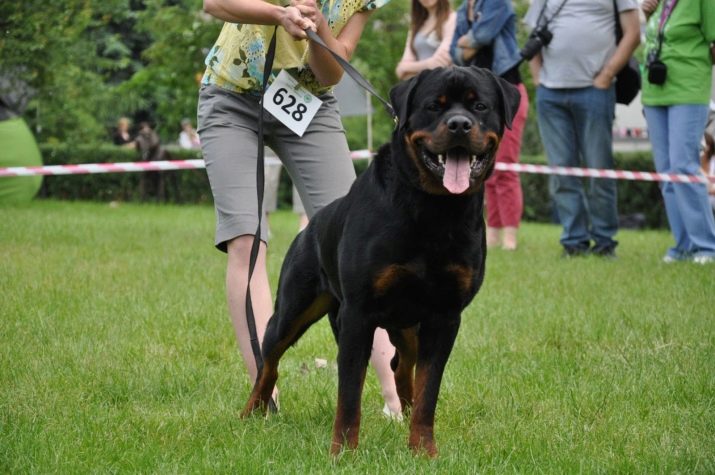
With the development of railways in Germany, and the advent of a ban on livestock driving, this species was almost lost. Only a few enthusiasts saved the dogs from extinction. At the beginning of the 20th century, Rottweilers served in the English police. Their strong physique and powerful jaws helped the servants of the law. Simply put, this breed of dog has always worked in the service of man, trying to help, protect and protect.
They got a bad reputation recently, due to the irresponsible treatment of their owners and use in dog fights. These facts undeservedly spoiled the attitude towards the simple-minded Rottweilers.
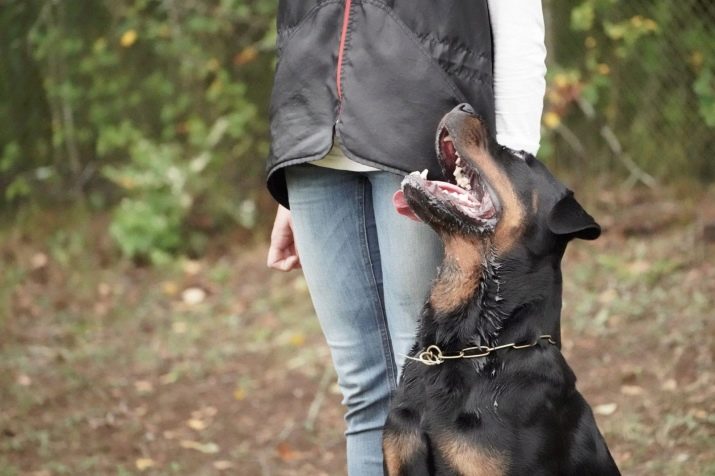
Features
Proper training of dogs at home is not an easy task, although the positive characteristics of the breed described will help in the implementation of this venture. A thorough preparation and thorough study of the characteristics of the breed and the theory of instruction are necessary here. Dog handlers recommend, in case of doubt in their abilities, to turn to professionals.
When you decided to take up pet training yourself, without carefully studying a large amount of material, familiarize yourself (at least) with the basic rules of training. Patience, calmness and severity - these qualities will help to form a balanced character in your pet.
Teaching your puppy good behavior is essential all the time. At home, it is important to encourage his good deeds in any suitable way.
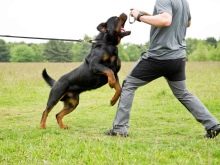
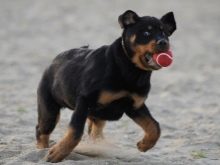

It could be treat or stroking. If the puppy does something wrong, you need to warn him, after slightly raising his voice. When this does not help, you need to get up, clap your hands, and show your superiority over him. Beating a dog is unacceptable. Any member of the family can raise a Rottweiler puppy, and training is the privilege of the owner only.
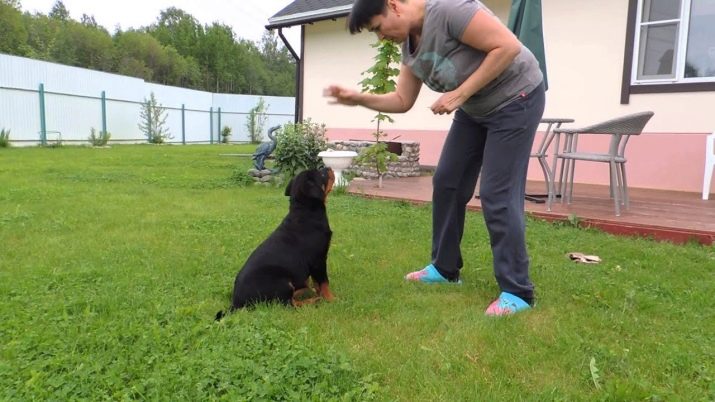
Rules of education and training
These animals have excellent protective qualities, but before you start training you need to consider some points. From the first day in a new family, the puppy chooses a master with whom he will have a thin contact. The dog will obey this person and obey him. A large part of the success in education will depend on the actions of the owner.
In relation to the dog you need to be patient, persistent and confident. In the process of training, the rottweiler can be stubborn and naughty. He will know what they want from him, but defiantly do not do it. The use of force in the course of training is unacceptable.
It is not allowed to "rush" by commands. Until the dog learns and executes a specific command, do not handle another.
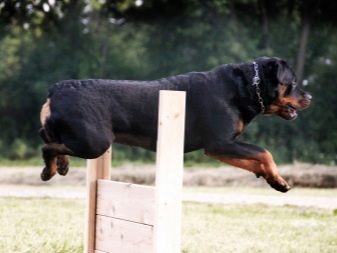
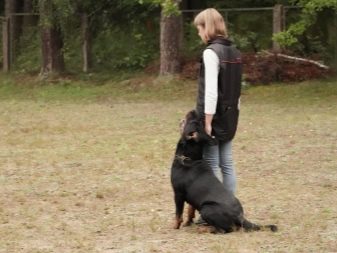
The result of such training can lead to a complete loss in the animal of interest in training or it will become entangled in teams. It is better to start long trainings thoroughly after the puppy reaches 8 months. In addition to the set of necessary commands (“to me!” “Fu!” “Place!” And others), it is advisable to teach the dog the correct posture.
It is required to teach the little Rottweiler the basics of defense and attack. But even the simplest teams require the right approach and consolidation. It is advisable to conduct training at the same time and in one place. The animal must get used to the activities.
If your pet begins to be distracted from training or does not follow the commands he knows, it is recommended to pause or continue training the next day.
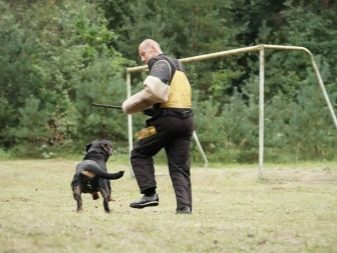
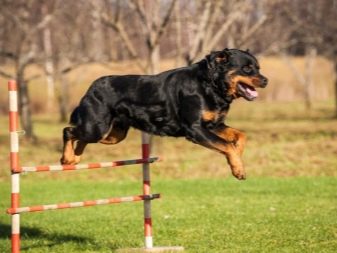
In Rottweiler puppies, training should take place at specific stages. You must understand the importance of these steps, because they affect the behavior and character of an adult dog. Let's consider these steps in more detail.
Training the team "fu!"
First of all, it is necessary to teach the puppy the command "fu!". It serves as an indicator of the level of obedience. It should be used always when the dog behaves improperly.
The training process for this team is simple, but requires patience from the trainer. First you need to say out loud the command "fu!" So that the dog can hear it. If the dog, having heard, does not show any reaction to the command, you need to repeat it in a firmer voice so that the pet draws you attention.
Next, you need to put any treat on the floor or in a bowl.
When your dog tries to take it, you need to stop it, saying "fu!".
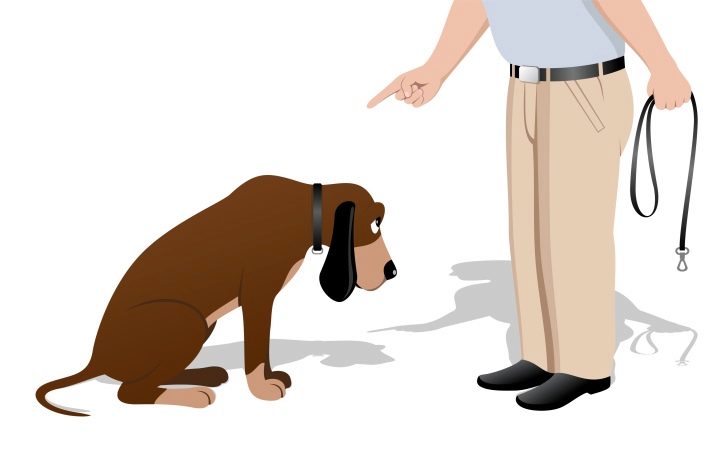
Several repetitions will allow you to develop a conditioned reflex to the command. It is important to remember that the best age for this is 1.5-2 months.
Walk on a leash
To teach a dog to walk on a leash, you must master the command "next!". At this point, the dog should be on the left hand of the owner. When pronouncing this command, the dog should take a position with a slightly taut leash.After a few meters, the leash can be loosened.
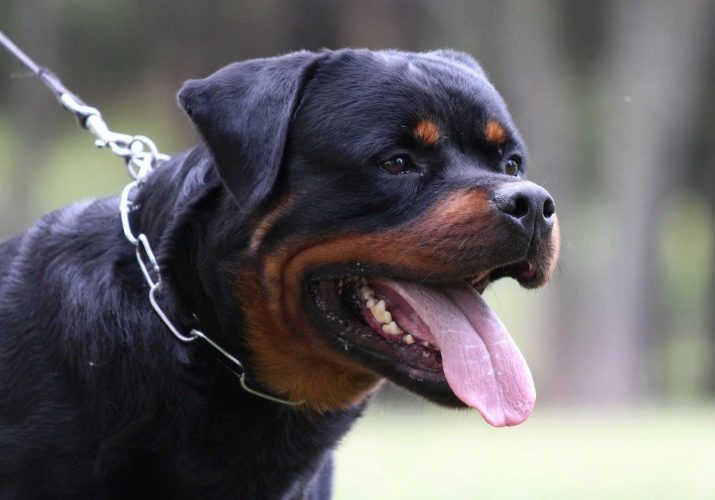
Learning to bring
Rottweiler training is closely related to education.
A well-bred puppy in the future will be better trained in new activities and teams.
For example, the offering of various objects. To teach the puppy this action, you will need to consistently perform three parts of the training.
- Teach your dog to brush an object. Better to start with a simple stick. When the pet takes it, you need to force it to give, using the command "give!". After proper execution, you need to encourage some goodies.
- Train to pick a stick from the floor. To do this, use the command "bring!" or "aport!".
- Next, you need to teach the animal to follow the owner with a stick in his teeth.. After that, you need to teach your pet to walk after her independently.
Often the owners may encounter the problem that the dog refuses to take a stick in his teeth. Trying to force it into the puppy's mouth can result in complete failure.
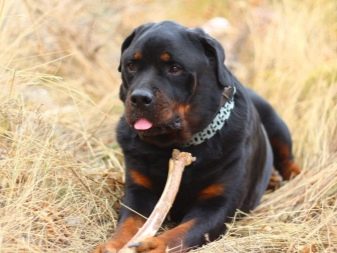
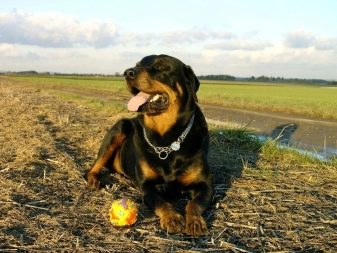
It is necessary to carefully place the stick in the mouth of the four-legged and with two fingers to grit the teeth for 1-2 seconds (this must be done as carefully as possible), until the dog has time to spit it out.
As soon as he throws it away, take away the object as soon as possible and thank the animal. Repeat the procedure several times, stretching the retention time of the item.
The opposite effect also happens when the pet does not give up the stick. In this case, one of the following options is suitable.
- Wait until the baby will not play with this stick, take it, go to it and wave it. When the animal tries to take it away from you, strictly say “give!”, Take it away, and immediately give it to the pet. This procedure must be carried out several times to obtain a result.
- If the puppy still does not give the object, then try stroking it or stroking it strictly to say the same command. When the grip loosens, carefully pick up the item, praise and give it back. It is important to pick up carefully so as not to injure the mouth, especially a young pet.
- In the early stages of training, the use of goodies is allowed so that the dog releases the thing. The main thing is the return of the item. The dog will know that you will return this thing to him.
To develop a habit of giving a stick to a dog, you need to repeat the procedure at least 3 times a day, gradually increasing the intervals between teams. The next step will be the selection of the stick from the puppy at the moment when he plays alone.
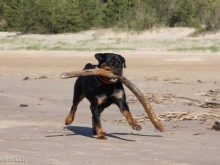
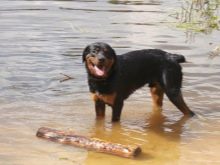

It is necessary to constantly stretch the time between the team itself and the return of the item.
You need to know that patience is the main thing in a dog’s acquisition of acquired skills. Take your time and work through each step carefully. As you train your pet, you will understand that this is a very simple procedure, and moral satisfaction from a good result and the presence of a smart and trained dog will be the best reward for the owner for his work.
See Rottweiler training below.
